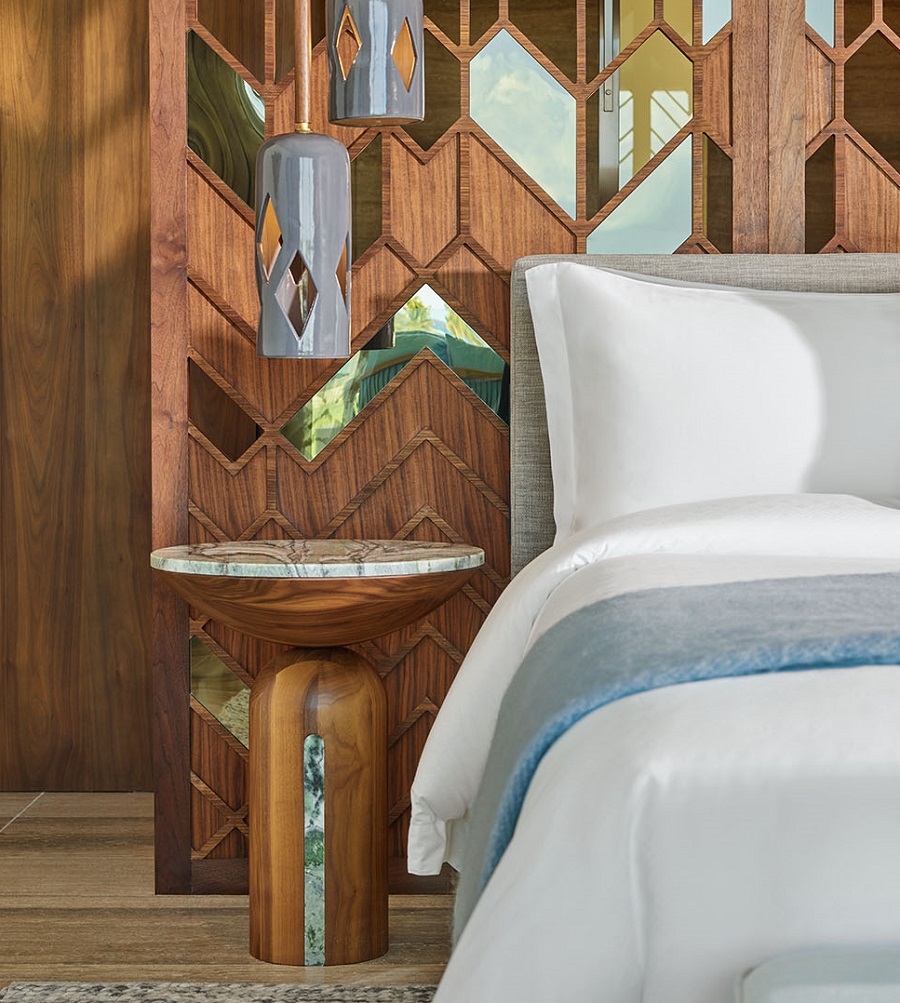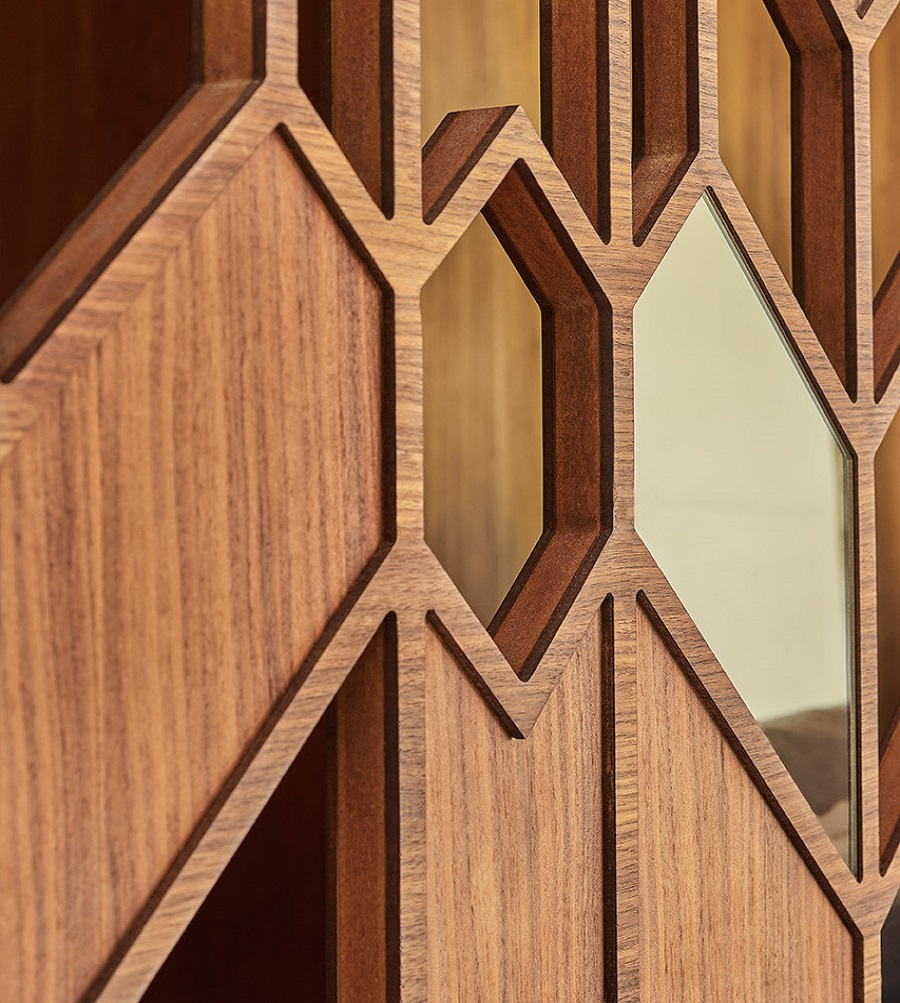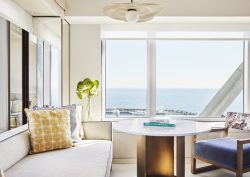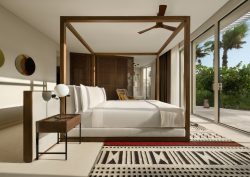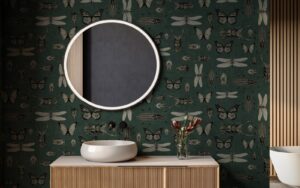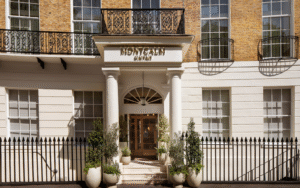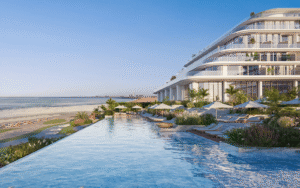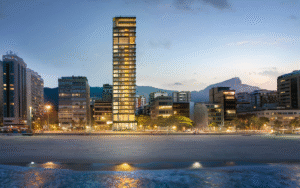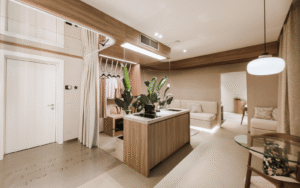Editor Hamish Kilburn spoke to Tatiana Sheveleva, Co-Founder of Chapi Chapo Design, to understand how she used nature – and the clear, starry skies – as her inspiration when creating the interior design scheme inside St Regis Kanai Resort in the Riviera Maya. Listen to the full episode of Travel By Design, a podcast by Marriott Bonvoy Traveller, in the article below…
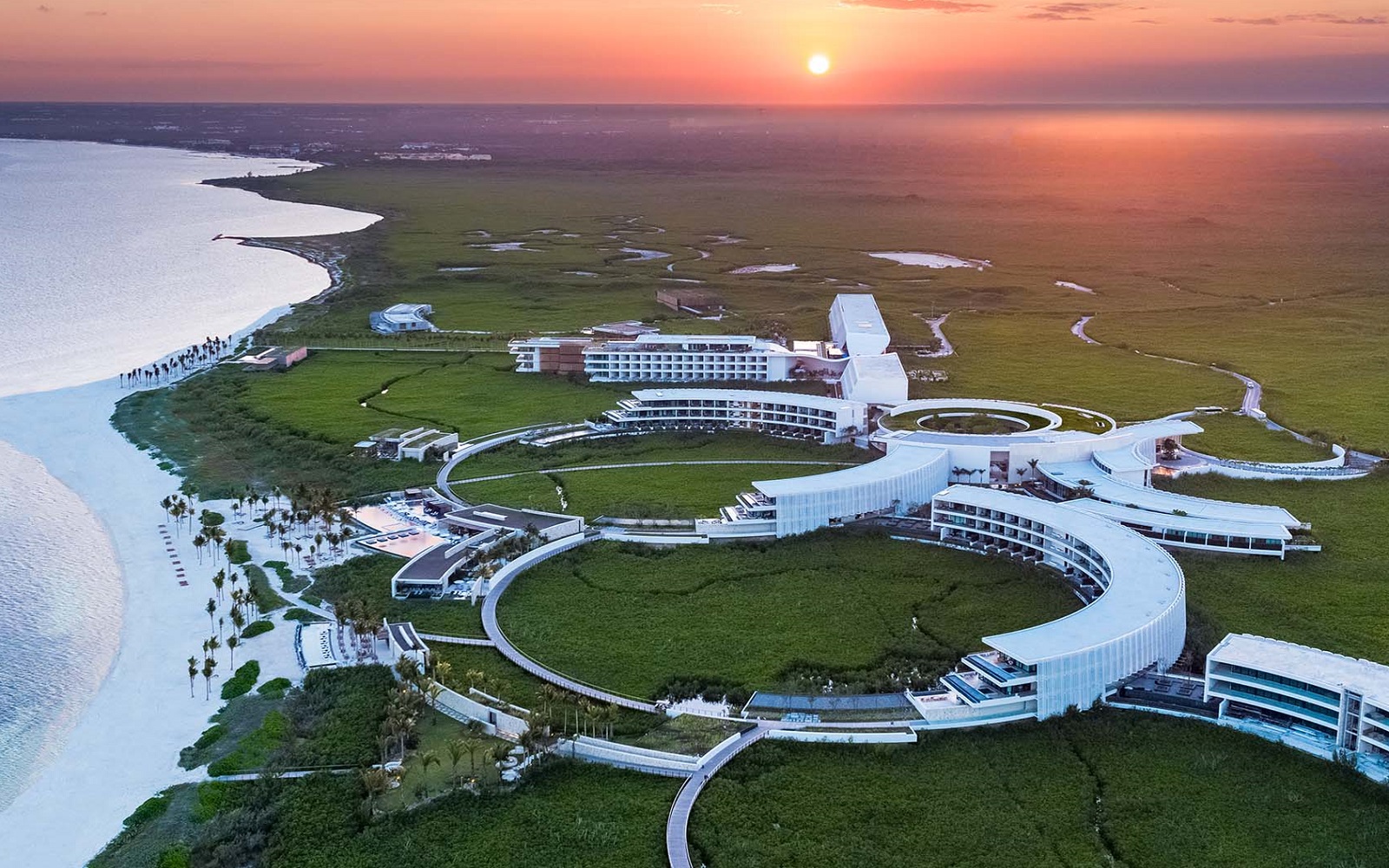
St Regis Kanai Resort, in the Riviera Maya on the Yucatan peninsula, Mexico, has a hotel design narrative that is unlike any other in a location that is out of this world.
Listen below to the full 18-minute episode of the podcast, featuring the resort and Editor Hamish Kilburn’s interview with Tatiana Sheveleva, Co-Founder of Chapi Chapo Design.
The Riviera Maya is a coastal paradise on the Yucatan peninsula of Mexico. It is home to peaceful mangroves, stunning beaches and breathtaking underground limestone lakes known as cenotes — but it’s also home to more than 4,000 years of Maya heritage. Fascinated by the Mayas’ historic mastery of astronomy and inspired by her first trip into the crystal-clear waters of the Yucatan’s cenotes, Tatiana Sheveleva designed the St. Regis Kanai Resort as an indoor-and-outdoor experience that literally reflects the stars and immerses travellers in the heavenly natural settings of the Riviera Maya.
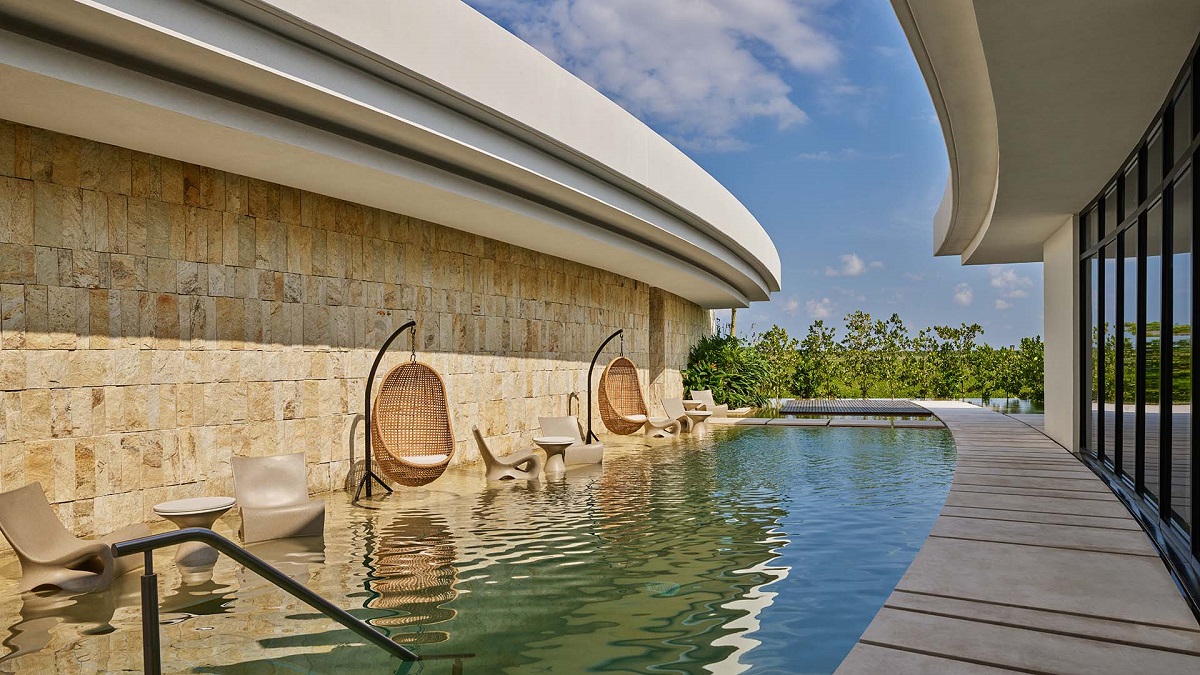
Image credit: Marriott International
From above, the resort that was built by architect Michael Edmonds is a cluster of white circular, low-level buildings. Edmund’s vision, which deeply inspired Sheveleva, was to reflect the stars of the ‘Seven Sisters’, honour the Mayan lunar calendar, and recognise that, in the Yucatan, this place is called Kanai — which translates to ‘Where the sky is born’.
More than perhaps anything, the interior designer was inspired by the architect’s initial approach. “He came to the land and in a quiet evening, he sat down beside the sea and he started to kind of meditate,” she told me on Travel By Design, a podcast by Marriott Bonvoy Traveller.
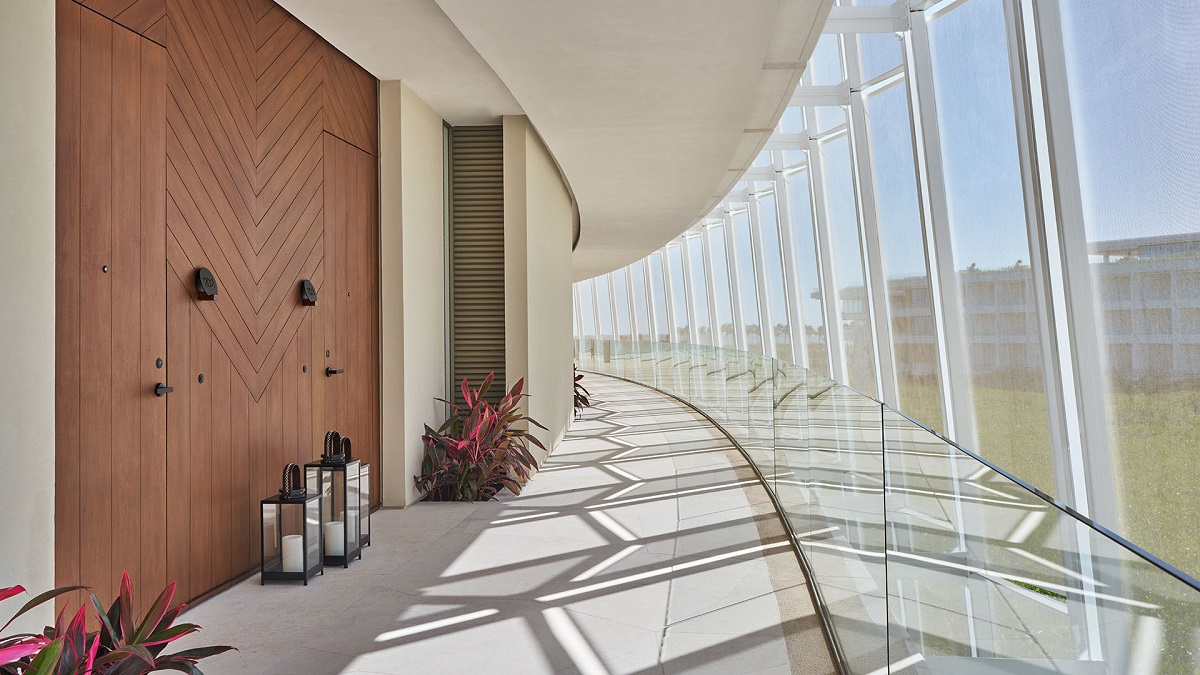
Image credit: Marriott International
To compliment Edmund’s architectural aesthetic, Sheveleva also looked towards the stars for inspiration – and, where possible, connected the design and architecture references. In the corridors, for example, the architect had explored the value of natural light to blur boundaries in the design, while also creating a layer of drama to these ever-evolving spaces. He did this by using shadows and natural materials that confidently answered to the hotel’s location. “The metal structure has this herringbone shape, which is also reflect of the Mayan textiles,” Sheveleva said. “It is exactly the same pattern that we designed on the headboard behind the bed in the guestrooms.”
As well as being inspired by the structure of the building, Sheveleva wanted to reference a transformative experience she had during her research of the area. “I felt like I died and went to heaven,” she told me on the podcast when describing the local cenotes, which are underground caves almost, made of limestone, which often have beautiful crystal clear pools of water. “It’s like the ground was shifted,” she explained, “the land got shifted and it created this beautiful underground lake, which is a pure clear water.”
Inspired by the powerful and emotional experience, Shevelva decided to incorporate references of the cenotes in the design of the bathrooms inside the hotel. “I decided to create an architectural sculptural sink, that stands in the middle of the room,” she explained. It’s a pure shape of this lake, cenote. And the stone has to capture all of these colours – brown, green and a touch of blue.”
Travel By Design is a podcast, hosted by Editor Hamish Kilburn and brought to you by Marriott Bonvoy Traveller. New episodes, which feature incredible design stories from all corners of the world, drop bi-monthly.
Main image credit: Marriott International






